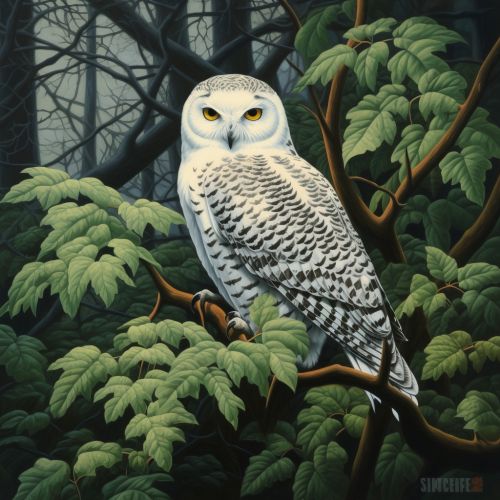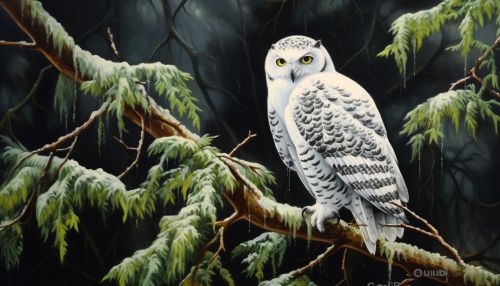Snowy owl
Description and Taxonomy
The Snowy Owl (Bubo scandiacus) is a large, white owl of the true owl family, Strigidae. Known for its distinctive white plumage that echoes its Arctic origins, this species is the only one in the genus Bubo found in this region. Its scientific name, scandiacus, is derived from Latin and relates to Scandinavia, as the species was first described in this region.


Distribution and Habitat
The Snowy Owl is native to the Arctic regions of both North America and the Palearctic, stretching across Canada, Greenland, and northern parts of the United States, Scandinavia, and Russia. They are well adapted to their Arctic habitat, with their thick plumage and heavily feathered talons providing insulation against the cold.
Physical Characteristics
Snowy Owls are one of the largest species of owl. They have a rounded head, yellow eyes, and a black bill. Their most distinctive feature is their white plumage, which provides camouflage in their snowy habitat. Males are almost entirely white, while females and young owls have more flecks of black.
Behavior and Ecology
Snowy Owls are diurnal, meaning they are active during the day, unlike most other owl species. They are also nomadic, with their movements and wintering locations largely dependent on the availability of their preferred prey, the lemming.
Diet
The diet of the Snowy Owl is largely made up of lemmings, but they are opportunistic hunters and will prey on a variety of small mammals and birds if lemmings are scarce. They have even been known to take fish and carrion.
Reproduction
Snowy Owls are monogamous and mate for life. Females lay a clutch of 3-11 eggs, with the size of the clutch dependent on food availability. The female incubates the eggs while the male brings food to the nest.
Conservation Status
The Snowy Owl is currently classified as Vulnerable on the IUCN Red List. Threats to the species include climate change and habitat loss due to human activity.
Cultural Significance
The Snowy Owl holds a significant place in the mythology and folklore of several cultures, including the Inuit and the Sami people of Scandinavia. In recent years, it has gained further recognition through its association with the Harry Potter series, in which the character Harry owns a Snowy Owl named Hedwig.
